Chicken Parasites
Worms
Chickens love to eat worms (the ones that live in the ground) but unfortunately we are not talking about those type of worms in this section. Like all other animals chickens can suffer from parasitic worms, and will need regular worming to prevent them becoming infected. It is much easier to prevent worms rather than treat worms.
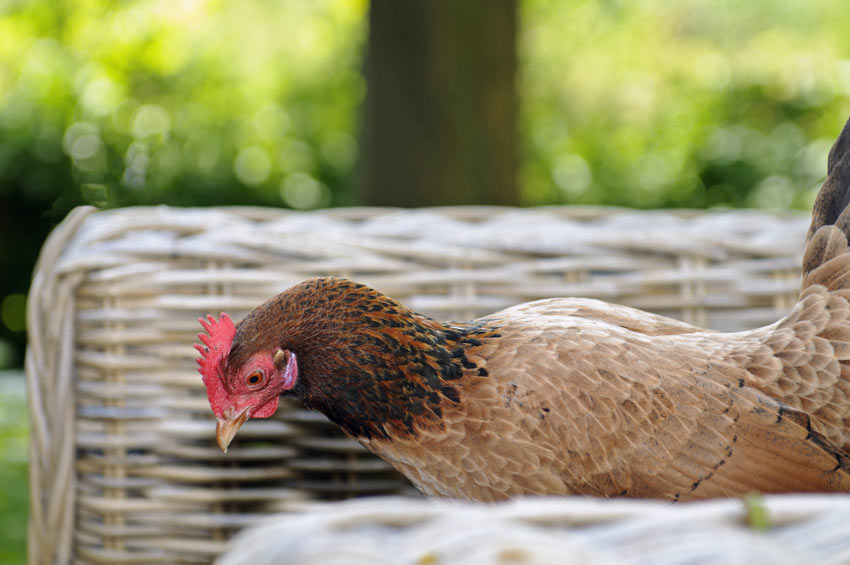
A healthy hen happily free ranging in the garden
There are three types of parasitic worms that chickens can contract:
- Roundworms - There are a few different types of roundworms including threadworms, hairworms, and the large roundworm which is most common. These can be found anywhere in your chickens digestive system. You may be able to see the worms in your chicken's droppings.
- Gapeworms - These worms attach themselves to the trachea of the chicken. A chicken with Gapeworms will ‘gape’ which is where they appear to be gasping for air and will stretch their head and neck up to the sky. It is more common for these worms to be picked up through intermediate hosts such as worms, slugs, and snails.
- Tapeworms - These worms attach themselves to the lining of the intestine. These are less common but can significantly weaken your chickens immune system.
The Lifecycle Of Worms
The life cycle of worms mean that getting rid of these pesky beasties can be particularly hard. Your chickens can directly or indirectly ingest worm eggs. Direct ingestion means they will eat the worm egg. Indirect ingestion means they will eat a worm or another bug that is the host of the worm egg. The worms will then happily live inside your chicken reproducing and laying eggs which will be passed out in your chickens droppings and the cycle begins again. If your chickens are infected it is much easier to get rid of the worms if you move your chickens to a new grazing area regularly. This is so your chickens won’t be continually ingesting the worm eggs which are in your chickens droppings.
Symptoms
It can be hard to tell if your chickens have worms which is why prevention and regular worming is important. A chicken with worms will go off lay, may have diarrhoea, will eat more, and in severe cases will lose weight. A serious infection can be fatal. Chickens with Gapeworm will stretch their neck gasping for air.
Prevention
Preventing worms is much easier to do than to treat a worm infection. You can prevent worms using a number of products. Omlet stock a range of herbal worming treatments such as Verm-X that can be administered to your chickens feed or water every month. Your other option for prevention of worms is a to use a chemical called Flubenvet which can be administered every 3-6 months. Apple cider vinegar is another natural remedy that is not only a natural wormer but good for your chickens overall health. A teaspoon of this per litre of water regularly will be sufficient to keep your chickens in tip top condition.
Treatment
You will need to regularly (preferably every day until you think your chickens are worm free) move your chickens onto a new grazing area to stop them from continually ingesting worms. If you can’t move your chickens then you can buy products to sanitise the ground to kill the worms. Keeping the grass short will help as the sun's UV rays will damage and kill the eggs. If you suspect your chickens have Gapeworm then you will need to use chemical treatment such as Flubenvet or Solubenol which you can get from licensed sellers or the vet. Herbal treatments such as Verm-X should be able to deal with other types of worms.
Red Mite
Red mite can be a tricky problem to deal with when keeping chickens. Red mites are small parasitic mites that live in your chicken coop in the daytime and feed off the blood of your chickens at night. All types of chicken coops can get red mite however wooden coops tend to suffer from infestations the most.
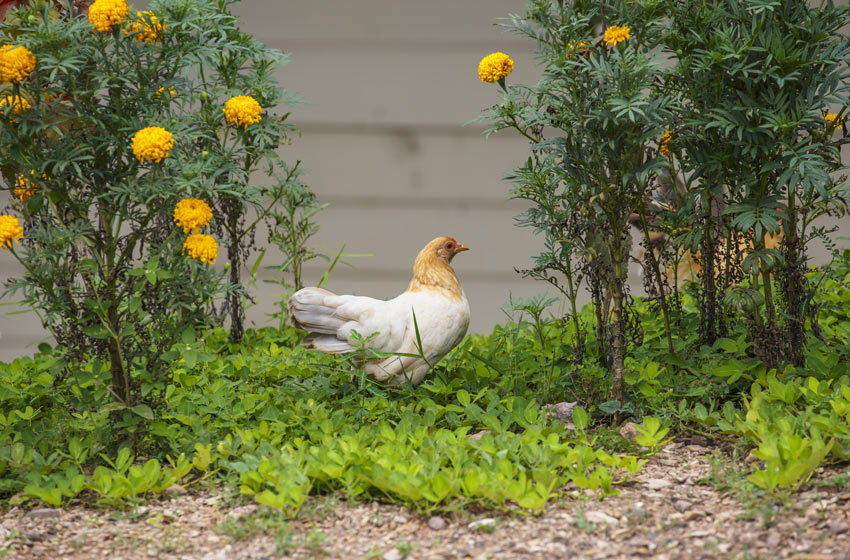
A beautiful white and ginger chicken searching for some bug in the garden
All Omlet’s Eglu chicken coops are made from plastic which make it very difficult for Redmites to make a home. They are quick and easy to clean in the event that there is a Redmite infestation; a quick blast with a pressure washer should do the trick.
Symptoms and Signs of Red Mite
- Drop in egg production
- Pale comb and wattles
- Anaemia
- Presence of red or grey mites in the coop or on the bird around the vent area.
Top Tip: When checking your chicken coop for red mites check the perch’s are the end and cracks and crevices. An even easier way to check is to run a white paper towel underneath the perches at night. If there are Redmites, at this time they will be on the underside on the perch after feeding on your chickens and you will be able to see red streaks on your paper towel.
Red Mite Treatment
Unfortunately Redmite are very persistent and it may take a while to rid your chicken coop of them but with management over time it is possible. If you follow the below steps you should be able to reduce the numbers relatively quickly. The initial clean out will take a few hours for wooden coops. With a plastic coop it will take less time.
- Clean out the coop- get rid of any bedding (dispose of it in a plastic bag in a bin as the redmites will happily find somewhere else to live).
- Strip the coop down. If you have a felt roof you will need to remove this and have your coop re-felted.
- Mix a mite disinfectant detergent (such as Smite Professional Disinfectant 1 Litre Concentrate or Barrier Red Mite X Concentrate - 500ml) with water (using the manufacturer's guidelines). Apply this to the coop ensuring you get it in the cracks and crevices. Leave for 15-20 minutes.
- Use a hose (preferably high pressure) to hose down the house and the parts. Try to get in every nook and cranny of the coop as this is where the mites like to live. Leave for 10-15 minutes to dry. Look at the coop again and you will most probably see more mites, which have been disturbed, crawling out. Pressure hose the coop again. Leave again for 10-15 minutes and look again for red mites. Repeat this process until there are very few mites emerging after each wash.
- Leave the house to thoroughly dry. Its ideal to do the initial clean on a sunny day as the UV can kill some bacteria and will dry the house quicker.
- Put the coop back together and add bedding.
- Sprinkle the whole coop and your chickens with a red mite powder. Ensure you rub the powder onto the perches so any remaining mites will have to crawl through it to reach your chickens. Omlet stocks a large range of redmite powders and diatom powders to deal with redmite infestations.
- Re-apply the red mite powder every couple of days or when it has rubbed of.
- Throughout May to October it is sensible to continue using powder as these hot summer months are when redmite is most common.
Scaly Leg Mite
Scaly legs on chickens are caused by a parasitic mite (Knemidocoptes mutans) that burrow under the scales on the chicken's legs. The damaged tissue weeps, which is what these mites feed on.
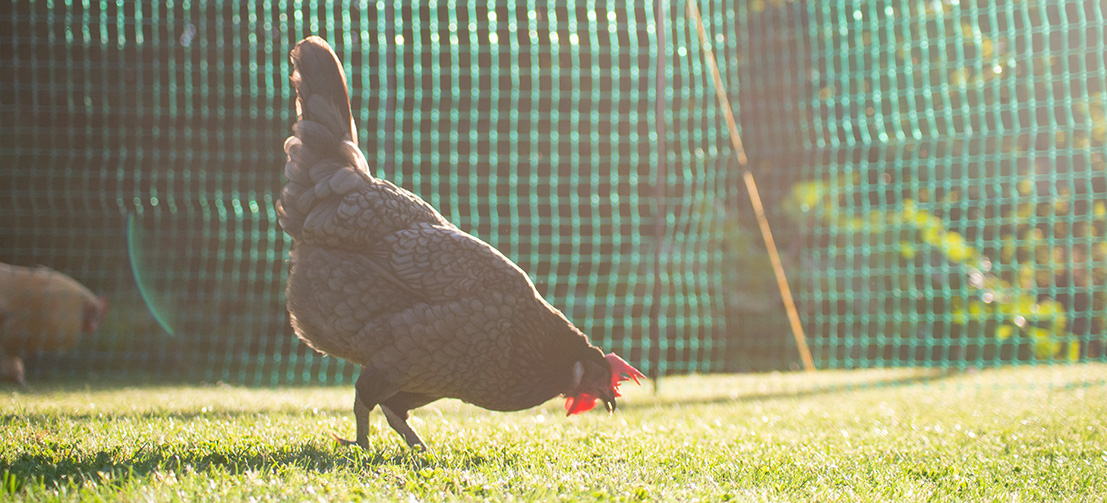
A healthy chicken searching the grass for some bugs to eat
Signs and Symptoms
- Raised scales on the legs
- Crusty legs
- Lameness (severe cases)
- In the early stages of the infection the chicken will have mild irritation. It takes several months of infection before the scales on the legs start to lift.
Scaly Leg Mite Treatment
Scaly mite can be treated by using a lotion that will soothe and kill the mites. There are a variety of lotions available; Omlet stock Johnsons Scaly Leg Lotion. Whilst treating and after the infection has cleared up you can use repellant sprays as a preventative measure. You should treat all of your birds even if only one bird has scaly legs, as scaly leg mite is very contagious and it is highly likely that all of your birds will have the mite. Another treatment is to dip your chickens legs in surgical spirit three times a week and rub vaseline on the legs in between dips to try and soften the scales and suffocate the mites. You should also use mite powder such as Diatom powder to sprinkle in their run and in their coop. Omlet have a range of Diatom and Mite powders; click here to view mite powders.
Lice
Lice are a fairly common parasite that chickens can suffer from. The most common type of lice that chickens suffer from is Menopon gallinae. Lice will live on the chicken's skin underneath the feathers. The entire life cycle happens on the chicken so it is much easier to treat lice compared to worms. In small numbers lice don’t cause much irritation to your chickens and your chickens will try to manage their lice by having dust baths which will suffocate lice. However if your chickens have large numbers of lice living on them then they will need a bit of extra help from you.
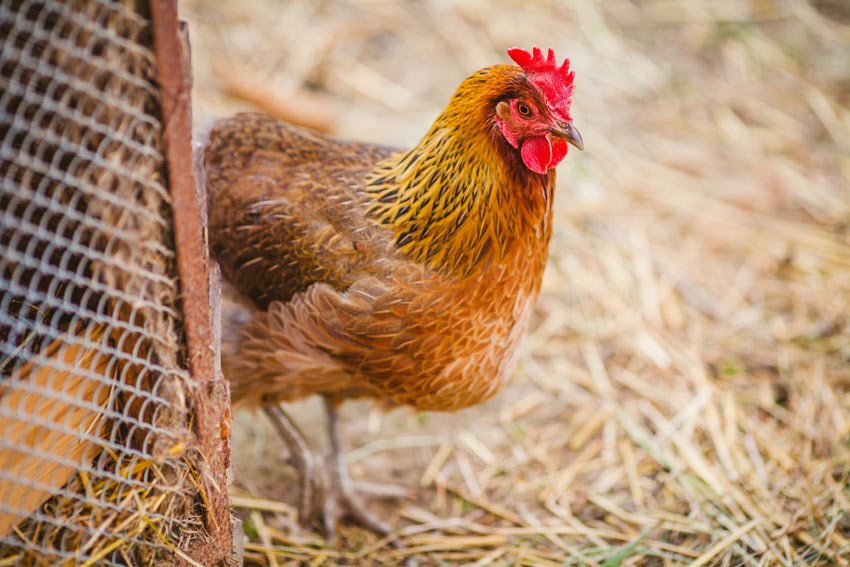
A happy hen scrapping around for bugs after having just been let out
Signs And Symptoms
- A drop in egg production
- Broken feathers, feather loss, overpreening
- Red or sore skin around the vent area
- Scratching
- Lice crawling around the shaft of the feathers.
- Nits - Clumps of eggs stuck to the bottom of the shaft of the feather. Most commonly around the vent area. This will be a whitish grey, and are very hard and tricky to remove.
Treatment
Lice are easy to treat and your chicken should be lice free in a relatively short amount of time from when you start treatment; usually roughly 3 weeks as the life cycle of the lice is 3 weeks. As a preventative method it is a good idea to sprinkle Diatom powder in your chickens dustbaths (or over the area they usually use for dustbaths) as this will keep the lice from being able to take hold. If there are lots of lice then you can use a lice powder to powder your chickens. If you dust your chickens with a powder all over working it into their feathers and onto the skin 3-4 times a week for 3 weeks. You will need to do this for 3 weeks as any eggs left will hatch and you will need to kill off those lice until your chicken is lice free. In the mornings you can also dust their chicken coop with the powder although be careful to not make it too dusty as dust can cause respiratory problems. Omlet stock a range of lice powders which will effectively deal with the problem.
The Depluming Mite
The Depluming mite is a related to the scaly leg mite. It is a burrowing mite that burrows in the skin by the shaft of the feather. The mite causes irritation to the skin and feeds off the fluids that are released as a result of the irritation. As a result the chicken will pluck her own feathers out and will look a bit worse for wear and tatty. Unlike with a lot of other parasites, the depluming mite doesn’t always affect all of your chickens. You may just have one chicken who will suffer. This isn’t to say it can’t affect your whole flock however. The mite carries out its entire lifecycle on the bird over 17 days. Rather than laying eggs like most other parasites, the depluming mite gives birth to live young.
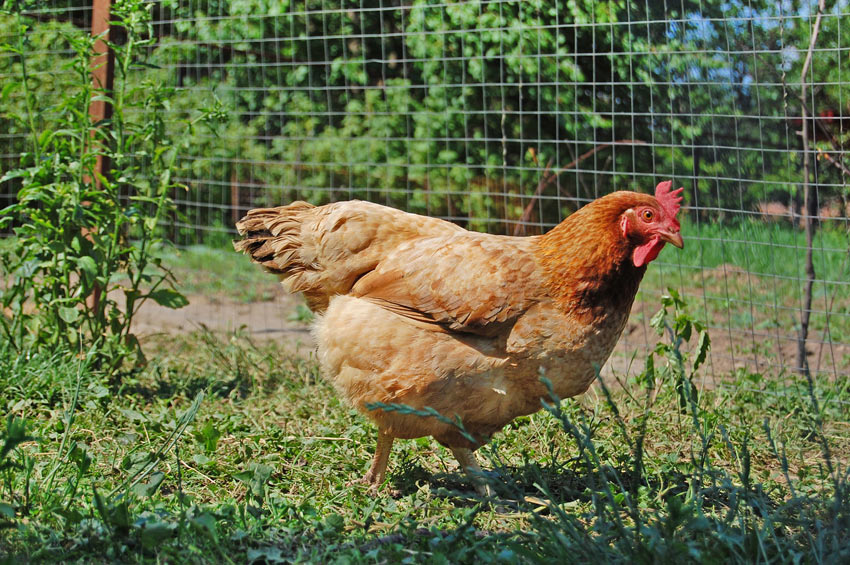
A happy free roam chicken with a healthy set of ginger feathers
Signs And Symptoms
- Plucking their own feathers out
- Overpreening
- Broken feathers
- Loss of feathers
- Thick, crusty skin at the bottom of the feathers
- Drop in egg production
- Weight loss
Treatment
The depluming mite is notorious for being tricky to treat as it burrows fairly deep into the skin where the mite powders struggle to reach. There are several different methods and there are many differing opinions on the best way to treat depluming mite. Using flowers of sulphur baths is one method that some poultry owners choose. You can buy this at most pet stores and it will kill any parasite that is living on your chicken including the depluming mite. This is a natural mineral that isn’t harmful to your chicken, other pets or garden. Another treatment some poultry keepers use is Ivermectin. This is sometimes prescribed by vets however Ivermectin isn’t licensed for poultry, so if you do choose to use this you should contact your vet for advice on how to use it. If you suspect your chickens do have depluming mite it is best to get advice from your vet on how to get rid of the problem.



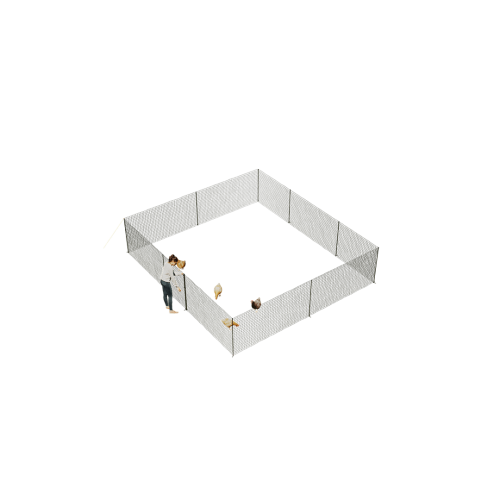
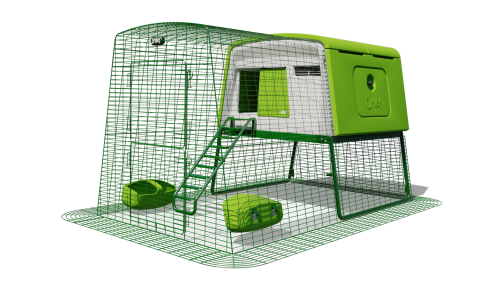
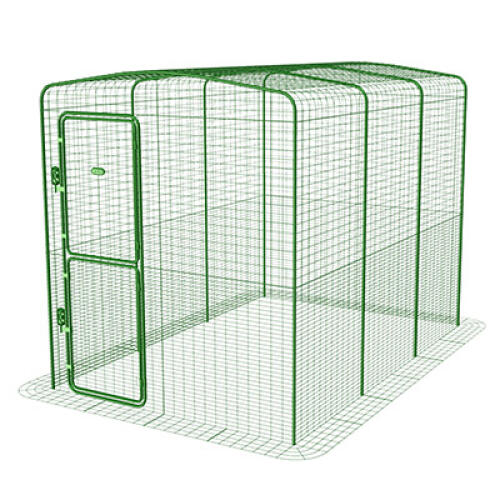
Komentarze
W tej sekcji nie ma jeszcze komentarzy